Canyoneering
Canyoneering is any adrenaline junkie's dream because of the adventurous nature of the activity. Canyoneering is anything that gets thrill seekers across a canyon either by swimming, climbing, rappelling, cliff jumping, or hiking.
What you will need
There are several items you need before you head on your first Canyoneering adventure. You will need a backpack, a drybag (for items you don’t want wet), rope, a harness, carabiners, a helmet, and good shoes with good grip. For many canyons, being a proficient rock climber is a must. You should at least be very confident with rappelling.
If you are canyoneering for your first time, bring a guide that has experience canyoneering where you want to go.
Canyoneering often involves water so be adequately prepared with water shoes, quick drying clothes, plenty of food and water, and a hiking pole. Always be aware of the weather patterns near your canyon and upstream from you. Even a little ran upstream could create a massive flash flood scenario if you're trying to navigate a narrow slot canyon.
Etiquette
- Pack out what you bring in. Be sure not to leave trash or any waste along trails to make sure that the canyoneering experience is as great for any other adventurers that come after you.
- When faster climbers are in the same area as you, let them pass you in order to prevent crowding along the narrow canyon areas.
- Remember to take your ropes and use specialized raps to prevent grooves being made in the rock to preserve the natural structures you are climbing
Where to Go
There are some great places to go canyoneering all around the United States. From Zion National Park in Utah to Watkins Glen State Park in New York. Pick a place that you are comfortable with and know the surroundings so you can be prepared in case of emergency. Be aware of your skill level so you do not get into any situation you aren’t ready for. It’s ok to work your way up to your dream destinations!
Other Good Resources
Here's some of our favorite canyons
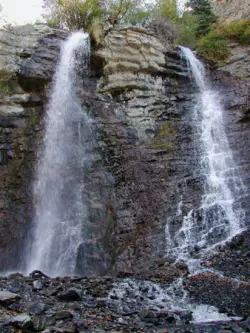
Battle Creek Falls
Pleasant Grove, Utah
2.0 miles E of Pleasant Grove, UtahBattle Creek Falls, located near Pleasant Grove, Utah, is a scenic waterfall that also has a rappelling and rock climbing area nearby. Hikers are allowed to see the falls from two view points, below...
Canyoneer, Hike 20.4 mi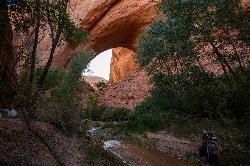
Coyote Gulch
Escalante, Utah
39.9 miles SE of Escalante, UtahCoyote Gulch is a natural slot canyon near Escalante, Utah, Bryce Canyon National Park, and Lake Powell State Park. Coyote Gulch is any backpacker's paradise with a flowing river, many places to...
Backpack, Canyoneer, Hike 0.2 mi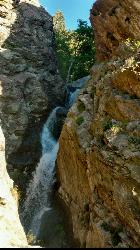
Rocky Mouth Trail/Waterfalls
Sandy, Utah
2.1 miles SE of Sandy, UtahThis adventure begins with a very scenic hike to a beautiful waterfall and ends with a magnificent rappel through a short slot canyon and down the waterfall. The hike to the waterfall is a great trip...
Canyoneer, Hike, Rock Climb 7.5 mi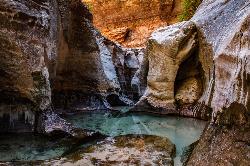
The Subway
Apple Valley, Utah
14.7 miles N of Apple Valley, UtahThe Subway is one of the best kept secrets of Zion National Park. A little off the beaten path, but a hike that is a must see for any adventure seeking person out there. Hikers begin at the Wildcat...
Canyoneer, Hike, Swim 0.8 mi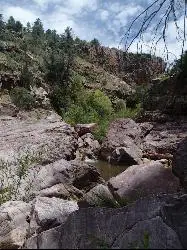
Christopher Creek Gorge
Payson, Arizona
16.4 miles E of Payson, ArizonaChristopher Creek Gorge is a fun swimming or canyoneering destination located in Christopher Creek, just outside of Payson, Arizona. To get there, you have to hike from the Christopher...
Canyoneer, Hike, Swim 1.1 mi
Christopher Creek Campground
Payson, Arizona
17.3 miles E of Payson, ArizonaChristopher Creek is a popular campground situated just east of Payson, nestled between the Christopher Creek river, and the town of the same name. This site is used for both overnight and day-use...
Camp, Canyoneer, Cross-country Ski, Hike, Swim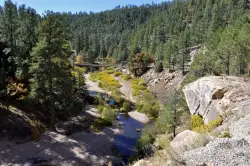
East Clear Creek
Happy Jack, Arizona
19.2 miles SE of Happy Jack, ArizonaEast Clear Creek is a river that stretches through the Mogollon Rim area of Arizona. It provides water to the surrounding desert landscape, fishing opportunities, and various areas to hike,...
Canyoneer, Hike, Swim
McHood Park Clear Creek Reservoir
Winslow, Arizona
4.8 miles SE of Winslow, ArizonaLocated just outside of Winslow, Arizona, McHood Park may not initially seem like much. However, with the companion reservoir, it hosts a large variety of potential activities. This area allows for...
Camp, Canoe, Canyoneer, Kayak, Rock Climb, Swim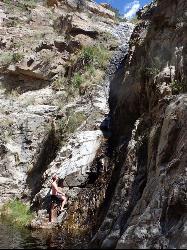
Seven Cataracts
Tucson, Arizona
15.2 miles NE of Tucson, ArizonaSeven Cataracts is a set of waterfalls located within Willow Canyon near Tucson, Arizona. The best way to reach the pools at the bottom involve some canyoneering to maneuver down the rocks along the...
Canyoneer, Hike, Swim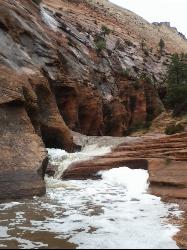
Keyhole Canyon
Springdale, Utah
6.0 miles NE of Springdale, UtahMany of Zion's canyons are deep, long and have a permanent stream flowing through, but the national park also contains plenty of short, narrow slots, and the easiest reached is undoubtedly...
Canyoneer- Plan Ahead and Prepare. Know the regulations and special concerns for the area you'll visit. Prepare for extreme weather, hazards, and emergencies. Schedule your trip to avoid times of high use. Visit in small groups when possible. Consider splitting larger groups into smaller groups. Repackage food to minimize waste. Use a map and compass to eliminate the use of marking paint, rock cairns or flagging.
- Travel & camp on durable surfaces. Durable surfaces include established trails and campsites, rock, gravel, dry grasses or snow. Protect riparian areas by camping at least 200 feet from lakes and streams. Good campsites are found, not made. Altering a site is not necessary.
- Dispose of waste properly. Pack it in, pack it out. Inspect your campsite and rest areas for trash or spilled foods. Pack out all trash, leftover food and litter. Deposit solid human waste in catholes dug 6 to 8 inches deep, at least 200 feet from water, camp and trails. Cover and disguise the cathole when finished. Pack out toilet paper and hygiene products. To wash yourself or your dishes, carry water 200 feet away from streams or lakes and use small amounts of biodegradable soap. Scatter strained dishwater.
- Leave what you find. Preserve the past: examine, but do not touch cultural or historic structures and artifacts. Leave rocks, plants and other natural objects as you find them. Avoid introducing or transporting non-native species. Do not build structures, furniture, or dig trenches.
- Minimize campfire impacts. Campfires can cause lasting impacts to the environment. Use a lightweight stove for cooking and enjoy a candle lantern for light. Where fires are permitted, use established fire rings, fire pans, or mound fires. Keep fires small. Only use sticks from the ground that can be broken by hand. Burn all wood and coals to ash, put out campfires completely, then scatter cool ashes.
- Respect wildlife. Observe wildlife from a distance. Do not follow or approach them. Never feed animals. Feeding wildlife damages their health, alters natural behaviors, and exposes them to predators and other dangers. Protect wildlife and your food by storing rations and trash securely. Control pets at all times, or leave them at home. Avoid wildlife during sensitive times: mating, nesting, raising young, or winter.
- Be considerate of other visitors. Respect other visitors and protect the quality of their experience. Be courteous. Yield to other users on the trail. Step to the downhill side of the trail when encountering pack stock. Take breaks and camp away from trails and other visitors. Let nature's sounds prevail. Avoid loud voices and noises.

















